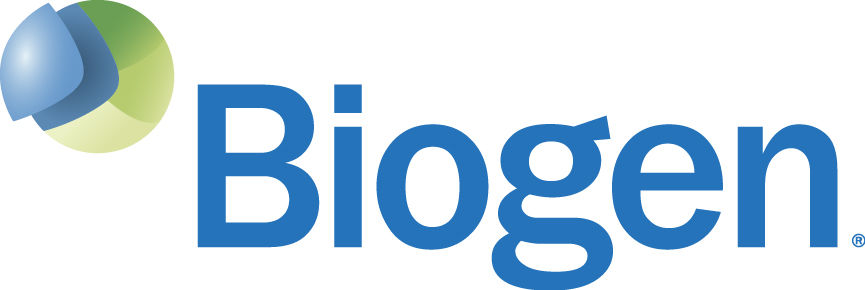预约演示
更新于:2025-05-07
BIIB-076
更新于:2025-05-07
概要
基本信息
原研机构 |
非在研机构 |
权益机构- |
最高研发阶段临床1期 |
首次获批日期- |
最高研发阶段(中国)- |
特殊审评- |
登录后查看时间轴
关联
1
项与 BIIB-076 相关的临床试验NCT03056729
A Phase 1, Randomized, Blinded, Placebo-Controlled, Single-Ascending-Dose Study to Evaluate the Safety, Tolerability, and Pharmacokinetics of BIIB076 in Healthy Volunteers and Subjects With Alzheimer's Disease
The primary objective of the study is to evaluate the safety and tolerability of single-ascending intravenous (IV) infusions of BIIB076 in healthy volunteers and participants with Alzheimer's disease (AD). A secondary objective of the study for both healthy volunteers and participants with AD is to assess the serum pharmacokinetic(s) (PK) profile of BIIB076 after single-dose administration. Another secondary objective is to evaluate the immunogenicity of BIIB076 in serum after single-dose administration.
开始日期2017-02-17 |
申办/合作机构 |
100 项与 BIIB-076 相关的临床结果
登录后查看更多信息
100 项与 BIIB-076 相关的转化医学
登录后查看更多信息
100 项与 BIIB-076 相关的专利(医药)
登录后查看更多信息
1
项与 BIIB-076 相关的文献(医药)1996-06-01·British Journal of Pharmacology
Nitric oxide, a possible mediator of 1,4‐dihydropyridine‐induced photorelaxation of vascular smooth muscle
Article
作者: Fina Lovren ; Chris R. Triggle ; Ed E. Knaus ; Detlef Bieger ; Nadeem Igbal ; Sean K. O'Neill
7
项与 BIIB-076 相关的新闻(医药)2025-01-13
阿尔茨海默病(AD)是一种会导致记忆力和其他认知功能逐渐衰退的致命性疾病。该疾病以记忆力损失和认知能力下降为主要特征,逐渐干扰日常生活活动。阿尔茨海默症还涉及其他认知领域的损害,如语言能力、思维能力、决策能力和执行功能。据相关统计数据,全球有3200万人患有阿尔茨海默病痴呆,其中中国阿尔茨海默病患者近983万人,目前AD患者仍存在巨大的尚未被满足的治疗需求,庞大的市场空间正吸引跨国药企加速角逐AD新药赛道。
2025年刚开启不久,当地时间1月8日,强生宣布,其在研Tau单抗Posdinemab获美国FDA快速通道资格,用于治疗早期阿尔茨海默病(AD)患者。
资料显示,Posdinemab是一种针对磷酸化tau蛋白的单克隆抗体(mAb),主要用于治疗早期AD患者。
目前,强生正在对早期AD患者进行2b期研究,研究内部发现的tau定向单株抗体Posdinemab。该药物在针对AD患者脑脊液中与疾病相关的磷酸化tau蛋白上显示出了潜力,并在记忆剥夺疾病的非临床模型中阻止tau蛋白聚集的发展和扩散。
Posdinemab通过靶向磷酸化tau蛋白,旨在减少其在脑脊液中的积累,从而减缓或阻止AD的进展。这种机制有助于改善患者的认知功能和减缓疾病进程。
据了解,针对阿尔兹海默病,很早就有学者提出类淀粉蛋白假说,认为可能是β类淀粉蛋白(Aβ)在大脑堆积导致阿尔茨海默病。近些年,全球范围内获批上市的AD新药也均为Aβ单抗。
例如,2024年1月,国家药监网站显示,日本卫材药业(Eisai)和美国渤健公司(Biogen)联合开发的阿尔茨海默病新药仑卡奈单抗(lecanemab-irmb)获批上市,用于轻度阿尔茨海默症(AD)和阿尔茨海默症(AD)引起的轻度认知障碍(MCI)疾病的改善治疗。这是迄今为止头一款在我国获批上市的抗Aβ抗体药物。
2024年12 月 18 日,礼来宣布多奈单抗注射液(Donanemab)获药监局批准上市,用于治疗成人因阿尔茨海默病引起的轻度认知功能障碍和阿尔茨海默病轻度痴呆(AD)。多奈单抗是礼来开发的靶向被称为N3pG的修饰化β-淀粉样蛋白(Aβ)抗体药物,已被美国FDA授予治疗阿尔兹海默(AD)的突破性疗法认定以及优先审评资格。2023年1月,CDE网站显示将多奈单抗注射液纳入突破性治疗品种。
更早的2012年,礼来的Amyvid(Florbetapir F18)获得美国FDA批准上市。我国于2018年开展Amyvid仿制药临床研究,相关企业有安迪科、北京欣翮等。
此外, FDA 针对淀粉样蛋白的 PET 诊断药物还有通用电气医疗集团 2013 年获批的 flutemetamol F18(Vizamyl)和 Piramal Imaging 2014 年获批的 florbetaben F18(NeuraCeq)。
而除了β淀粉样蛋白外,微管结合蛋白(Tau 蛋白)也被认为是引起阿尔茨海默病病情发展的主要原因。目前也有大批药企在开发这类药物。其中,渤健有三款针对 Tau 蛋白药物正在开发,分别是其与百时美施贵宝(BMS)共同研发的针对 Tau 蛋白 N 端片段(eTau)的抗体药物BIIB092、与 Ionis Pharmaceuticals 合作共同研发的BIIB080,以及针对 Tau 的抗体药物BIIB076。这些研究均处于 I 期或 II 期临床试验阶段。
来源:制药网
商务合作
130 6172 3098
zakk.cui@siqibest.com
点击 阅读原文 了解更多
突破性疗法优先审批上市批准快速通道加速审批
2022-10-08
可以预见的是,不论接下来担任渤健CEO的人是否是Mathai Mammen,接任这一职位的人都肩负着将渤健从因Aduhelm商业化不佳而导致的困境中解脱出来的重任,甚至是在未来可能发生的收购谈判中表现优异。据外媒报道,近日,Biogen(渤健)或将邀请强生前研发执行副总裁Mathai Mammen来担任CEO一职。知情人士透露,双方的沟通已进入“严肃”阶段,但还未完全确定。对此,渤健一位发言人回应:公司的CEO人选还在选择中。在备受争议的阿尔茨海默病药物Aducanumab(Aduhelm)上市后,渤健并未迎来高光时刻,反而陷入销售困境。今年5月,渤健宣布裁掉CEO Michel Vounatsos并缩减针对Aduhelm的销售投入。在经历过一位以商业化为重点的CEO领导之后,渤健曾透露选择下一位CEO时会更看重研发。而在此之前的9月28日,流年不利的渤健已迎来了2022年的第一个转机——公司和日本卫材共同开发的另一款阿尔茨海默用药Lecanemab在三期临床试验中达到了主要终点——约1800名早期阿尔茨海默症患者在用药18个月内早期患者的认知下降速度减缓了27%。这无疑是一个让人振奋的消息,不仅为在“黑暗期”沉寂了近20年的阿尔茨海默病药物研发带来新的希望,也极大地提振了投资者的信心。9月28日,渤健和卫材的股价分别大涨40%和58%,投资机构也纷纷将渤健股票上调至买入评级,并带动了一系列阿尔茨海默概念股实现不同幅度的上涨,其中拥有抗β淀粉样蛋白单克隆抗体ACU193在研的Acumen Pharmaceuticals涨幅一度高达近104%。1任重道远的CEO作为强生前研发执行副总裁,Mathai Mammen在2017年加入强生,担任强生旗下杨森制药研发全球负责人。让制药圈对Mathai Mammen印象最为深刻的例子或许是他推动杨森与中国生物技术公司传奇生物共同合作研发靶向BCMA的CAR-T产品Carvykti(西达基奥仑赛),并让其在今年2月顺利获得FDA上市批准,用于治疗复发性/难治性多发性骨髓瘤。作为全球第七款上市的CAR-T细胞疗法、全球第二款靶向BCMA的CAR-T细胞疗法、首个国内自主研发在海外获批上市的细胞疗法,Carvykti从研发到合作再到上市都备受外界关注,其在海外成功上市也为中国药企出海提供了很好的借鉴。在加入强生之前,Mathai Mammen是默沙东研究实验室的高级副总裁,负责心血管疾病、代谢和肾脏疾病、肿瘤学、免疫肿瘤学和免疫学等领域的研究。在加入默沙东之前,他是生物制药公司Theravance联合创始人,带领研发团队将5款新药推向市场。今年8月,Mathai Mammen从强生离职,以“寻求其他机会”。而他的研发背景或许也正是渤健正在寻找的转变。而与Mathai Mammen不同的是,渤健现任CEO Michel Vounatsos虽已在今年5月被宣布离职,但他还是要一直担任这一职位,直到渤健找到新CEO为止。Michel Vounatsos于2016年4月加入渤健,担任执行副总裁兼首席商务官,直至2017年1月晋升为CEO。在担任CEO的这5年中,Michel Vounatsos领导渤健上市了治疗阿尔茨海默病药物Aduhelm、首款治疗脊髓性肌萎缩症(SMA)的Spinraza(nusinersen,诺西那生钠)、治疗多发性硬化症(MS)的Vumerity(富马酸地洛肟酯)等多款知名药物上市。在加入渤健之前,他在默沙东工作了20年,在全球多个市场工作,包括中国、法国和波兰。他在默沙东的最后一个职位是美国初级保健和以客户为中心的总裁。此前,他曾在制药公司Ciba-Geigy AG担任管理职务。加拿大皇家银行在渤健宣布Michel Vounatsos将离职的同一个月发布了一项民意调查,数据显示近40%的利益相关者表示,希望渤健的下一任CEO在许可交易或收购领域拥有良好业绩。可以预见的是,不论接下来担任渤健CEO的人是否是Mathai Mammen,接任这一职位的人都肩负着将渤健从因Aduhelm商业化不佳而导致的困境中解脱出来的重任,甚至是在未来可能发生的收购谈判中表现优异。2二战“阿尔茨海默”终破局人事变化即将尘埃落定,产品也取得亮眼的临床数据,这些都将为渤健下半年的发展带来更多转机。2021年6月以来,渤健的日子并不好过。公司的阿尔茨海默药物Aduhelm先后遭遇上市受挫、医保限制使用、销售惨淡等问题,不仅让一手推动其上市的Michel Vounatsos被迫卸任,更导致渤健2021年收入暴跌18%,从而跌出全球营收TOP20制药公司榜单。今年开始,渤健大幅削减Aduhelm的相关商业基础建设,宣布取消Aduhelm的商业化团队,并于3月向美国的一些员工发出了裁员通知。渤健也透露会重新调整研发项目,可能会加速、终止、剥离或与某些项目进行合作。曾有分析师认为,如果最终lecanemab未能取得预期的积极结果,渤健将可能彻底放弃阿尔茨海默病领域的药物研发。而这次lecanemab亮眼的数据显然将为渤健和整个阿尔茨海默治疗领域的阴霾“破局”。有分析指出,尽管都是 Aβ抗体,但在Lecanemab在取得成功之前,药物研发公司们并不知道哪种机制的药物能够真正对阿尔茨海默的病理过程形成精准击破。比如,Aduhelm结合于可溶或不可溶的 Aβ蛋白,而Lecanemab结合区则与此不同,主要针对性清除其中可溶性、有毒的 Aβ聚集体。Lecanemab 的成功或许意味着,目前的药物研发已经开始渐渐接近其核心。尽管如此,对于渤健来说,Lecanemab未来上市所要遭遇的问题,并不会比曾经的Aduhelm少。Aduhelm最初获批适应证为阿尔茨海默病,可仅仅一个月,在争议声中,其适应证就被缩窄到患有轻度认知障碍或轻度痴呆的早期阿尔茨海默病患者,这大大降低了上市之后的销售峰值预期。跟Aduhelm相比,Lecanemab虽然具有说服力的三期临床数据,但目前Lecanemab的副作用仍较为严重,包括脑肿胀和脑出血。且之前Aduhelm价格约为每年56000美元,医生担心该药价格过高和不确定的治疗效果而不敢开药方,保险公司也阻止或限制将该药纳入医保范围。在经历Aduhelm事件后,FDA对此类药物的态度是否会更趋保守,Lecanemab带来的临床改善又最终能否在医生和医保支付方中受到认可,是其未来商业化的关键。基于此,渤健在其他领域也在进行积极布局,以求多条腿走路。Michel Vounatsos此前就透露,渤健将继续将研发资源聚焦在公司认为潜力最大的项目上,也会重新平衡整个管线的风险状况。例如,在SKYLARK(祖拉诺酮治疗产后抑郁的III期临床)研究呈阳性后,公司打算加快祖拉诺酮在产后抑郁症中的监管申报。此外,渤健还终止了一些公司认为具有较低阳性成功的研发项目,例如阿尔茨海默病的anti-tau抗体BIIB076和ALS中的小分子XPO1抑制剂BIIB100。此外,公司更在中报中高调提高了2022年的全年业绩指引。渤健预计,今年全年公司营收将达到99亿美元至101亿美元,其此前的预期为97亿美元至100亿美元,而市场预期则为98.4亿美元。非GAAP会计准则下的摊薄后每股收益为15.25美元至16.75美元,此前预期为14.25美元至16.00美元,市场预期为15.52美元。2022年,新CEO人选的确定和公司在阿尔兹海默治疗领域的突破能否为渤健带来新的转机,值得期待。登记邮箱信息订阅E药经理人信息服务扫描二维码精彩推荐集采 | 国谈 | 医保动态 | 药审 | 人才 | 薪资 | 榜单 | CAR-T | PD-1 | mRNA | 单抗 | 商业化 | 国际化启思会 | 声音·责任 | 创百汇 | E药经理人理事会 | 微解药直播 | 大国新药 | 营销硬观点 | 投资人去哪儿 | 分析师看赛道 | 药事每周谈 | 医药界·E药经理人 | 中国医药手册创新100强榜单 | 恒瑞 | 中生 | 百济 | 石药 | 信达 | 君实 | 翰森 | 和黄医药 | 齐鲁 | 上海医药 | 复宏汉霖 | 康方生物 | 贝达 | 荣昌 | 科兴生物 | 泽璟制药 | 复星医药 | 海思科 | 再鼎 | 基石跨国药企50强榜单 | 辉瑞 | 艾伯维 | 诺华 | 强生 | 罗氏 | BMS | 默克 | 赛诺菲 | AZ | GSK | 武田 | 吉利德科学 | 礼来 | 安进 | 诺和诺德 | 拜耳 | 莫德纳 | BI | 晖致 | 再生元
高管变更免疫疗法抗体细胞疗法并购
2022-07-21
7月20日,渤健发布了2022年H1财报。数据显示,公司上半年总营收51.21亿美元,同比下降6.4%;净利润12.77亿美元,同比下降10.7%;研发投入10.8亿美元,同比下降1.7%。具体到第二季度,渤健的营业收入为25.89亿美元,同比下降7%,较市场预期超出1.1亿美元;归属于母公司普通股股东净利润为10.58亿美元,同比增长136%;每股基本收益及摊薄后收益分别为7.25和7.24美元,上年同期分别为3.00和2.99美元。非GAAP每股收益为5.25美元,较市场预期超出1.16美元。值得一提的是,虽然财报有一些超预期的部分,但市场仍旧以暴跌回应。20日,公司股价跌去5.8%。而对于暴跌,分析师们普遍认为,是财报中缺乏有关其阿尔茨海默氏症药物Aduhelm的最新信息,导致市场对其未来持悲观态度。具体到产品,第二季度中多发性硬化(MS)仍然是渤健主要业务来源,包括OCREVUS特许权使用费在内的MS总收入为17亿美元,下降约4%。其中,富马酸二甲酯(TECFIDERA)的全球收入为3.98亿美元,减少了18%。尽管TECFIDERA在美国的收入与上一季度相比有所增加,但在其他地区则受到加拿大和德国等市场竞争的影响有所下降。而富马酸地洛西美(Vumerity)的全球收入则为1.37亿美元,增加了51%。其中,美国的VUMERITY继续增长,美国之外,VUMERITY也已在14个市场推出。 那他珠单抗(Tysabri)的全球收入为5.16亿美元,基本与去年同期持平。在美国,TYSABRI收入有所下降,但在其他地区则持续增长。而备受关注的阿尔茨海默病药物Aduhelm,在2022年整个H1仅收入290万美元,自2021年6月上市以来共收入590万美元。该产品的商业化道路一直受挫。基于此,今年5月渤健在一季度报中表示,决定基本取消Aduhelm的商业化措施。此前4月22日,渤健已经宣布撤回Aduhelm在欧洲的上市申请。这次,Aduhelm的走向成为市场对公司财报的一大关注点,而公司财报这次似乎并未对此进行“有意义的更新”,让许多投资者有“被蒙在鼓里”的感觉,因而选择了用脚投票。尽管业务上挑战重重,渤健还是提高了2022年的全年业绩指引。公司预计,今年全年公司营收将达到99亿美元至101亿美元,其此前的预期为97亿美元至100亿美元,而市场预期则为98.4亿美元。非GAAP会计准则下的摊薄后每股收益为15.25美元至16.75美元,此前预期为14.25美元至16.00美元,市场预期为15.52美元。而这一指引的增加主要是由于业绩好于预期和持续的成本管理。此外,今年5月,渤健曾宣布从2017年开始担任CEO的Michel Vounatsos在找到新的接班人后即会辞职。不过截至发布财报,公司仍没有提供关于寻找新领导人取代Michel Vounatso的最新消息。谈到未来,Michel Vounatsos此次表示,渤健将继续将研发资源聚焦在公司认为潜力最大的项目上,也会重新平衡整个管线的风险状况。例如,在SKYLARK(祖拉诺酮治疗产后抑郁的III期临床)研究呈阳性后,公司打算加快祖拉诺酮在产后抑郁症中的监管申报。此外,渤健还终止了一些公司认为具有较低阳性成功的研发项目,例如阿尔茨海默病的anti-tau抗体BIIB076和ALS中的小分子XPO1抑制剂BIIB100。而2022下半年,渤健在新产品方面则有一些值得期待的消息——公司的阿尔茨海默病新药lecanemab已向FDA提交上市申请并获优先审评资格,PDUFA日期是2023年1月6日,III期临床试验(Clarity AD)数据也将会在第三季度公布。登记邮箱信息订阅E药经理人信息服务扫描二维码
财报抗体免疫疗法小分子药物
100 项与 BIIB-076 相关的药物交易
登录后查看更多信息
研发状态
10 条进展最快的记录, 后查看更多信息
登录
| 适应症 | 最高研发状态 | 国家/地区 | 公司 | 日期 |
|---|---|---|---|---|
| 阿尔茨海默症 | 临床1期 | - | - |
登录后查看更多信息
临床结果
临床结果
适应症
分期
评价
查看全部结果
| 研究 | 分期 | 人群特征 | 评价人数 | 分组 | 结果 | 评价 | 发布日期 |
|---|
No Data | |||||||
登录后查看更多信息
转化医学
使用我们的转化医学数据加速您的研究。
登录
或

药物交易
使用我们的药物交易数据加速您的研究。
登录
或

核心专利
使用我们的核心专利数据促进您的研究。
登录
或

临床分析
紧跟全球注册中心的最新临床试验。
登录
或

批准
利用最新的监管批准信息加速您的研究。
登录
或

生物类似药
生物类似药在不同国家/地区的竞争态势。请注意临床1/2期并入临床2期,临床2/3期并入临床3期
登录
或

特殊审评
只需点击几下即可了解关键药物信息。
登录
或

生物医药百科问答
全新生物医药AI Agent 覆盖科研全链路,让突破性发现快人一步
立即开始免费试用!
智慧芽新药情报库是智慧芽专为生命科学人士构建的基于AI的创新药情报平台,助您全方位提升您的研发与决策效率。
立即开始数据试用!
智慧芽新药库数据也通过智慧芽数据服务平台,以API或者数据包形式对外开放,助您更加充分利用智慧芽新药情报信息。
生物序列数据库
生物药研发创新
免费使用
化学结构数据库
小分子化药研发创新
免费使用

